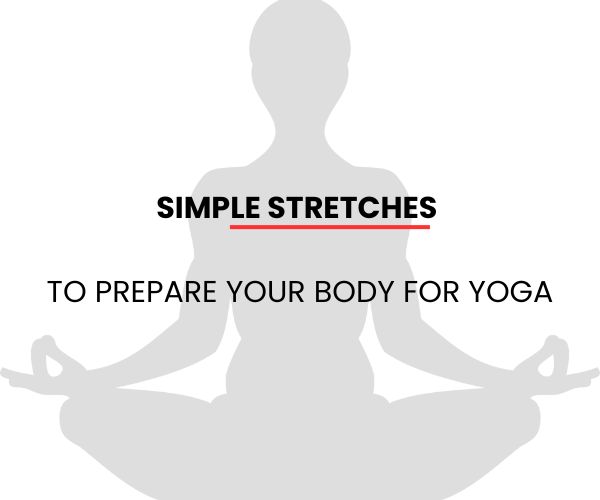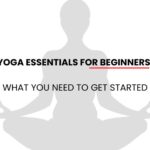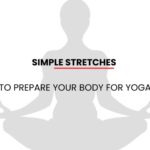Learn simple stretches to prepare your body for yoga. Discover techniques, benefits, and tips to enhance flexibility, prevent injuries, and improve your yoga practice.

Stretching is an essential component of any yoga practice. It helps to improve flexibility, increase blood circulation, and prepare the body for deeper poses. Whether you are a seasoned yogi or a beginner, incorporating simple stretches into your routine can enhance your yoga sessions and prevent injuries. This article will guide you through effective stretches to prepare your body for yoga, their benefits, and tips for performing them correctly.
Why Is Stretching Important Before Yoga?
Stretching before yoga serves several purposes:
- Warms Up the Body: Stretching increases blood flow to muscles, preparing them for movement.
- Enhances Flexibility: It improves the range of motion, allowing for smoother transitions between poses.
- Prevents Injuries: By loosening tight muscles and joints, stretching reduces the risk of strains and sprains.
- Improves Focus: The mindful nature of stretching helps align your breath with movement, setting the tone for a meditative yoga practice.
Essential Stretches to Prepare for Yoga
Here are some simple yet effective stretches to prepare your body for yoga:
1. Cat-Cow Stretch
- Target Areas: Spine, shoulders, and neck
- How to Perform:
- Begin on your hands and knees in a tabletop position.
- Inhale as you arch your back, lifting your head and tailbone (Cow Pose).
- Exhale as you round your back, tucking your chin and pelvis (Cat Pose).
- Repeat for 5-10 cycles.
- Benefits: Improves spinal mobility and warms up the core.
2. Child’s Pose Stretch
- Target Areas: Lower back, hips, and thighs
- How to Perform:
- Kneel on the floor and sit back on your heels.
- Extend your arms forward, lowering your chest to the mat.
- Rest your forehead on the floor and hold for 30 seconds to 1 minute.
- Benefits: Releases tension in the lower back and hips.
3. Downward Dog Stretch
- Target Areas: Hamstrings, calves, and shoulders
- How to Perform:
- Start on your hands and knees.
- Lift your hips towards the ceiling, straightening your legs and forming an inverted “V” shape.
- Keep your heels reaching towards the ground.
- Hold for 30 seconds.
- Benefits: Stretches the entire posterior chain and strengthens the upper body.
4. Seated Forward Fold
- Target Areas: Hamstrings, lower back, and calves
- How to Perform:
- Sit on the floor with your legs extended straight ahead.
- Inhale and lengthen your spine.
- Exhale and reach forward, aiming to touch your toes.
- Hold for 20-30 seconds.
- Benefits: Enhances hamstring flexibility and calms the mind.
5. Butterfly Stretch
- Target Areas: Inner thighs and hips
- How to Perform:
- Sit on the floor with your knees bent and feet pressed together.
- Hold your feet with your hands and gently press your knees towards the ground.
- Hold for 20-30 seconds.
- Benefits: Opens up the hips and improves circulation.
6. Neck Rolls
- Target Areas: Neck and shoulders
- How to Perform:
- Sit or stand comfortably with your back straight.
- Gently roll your neck clockwise for 5-10 rotations.
- Repeat counterclockwise.
- Benefits: Relieves tension in the neck and shoulders.
7. Side Stretch
- Target Areas: Obliques and shoulders
- How to Perform:
- Stand tall with your feet hip-width apart.
- Raise your right arm overhead and lean to the left.
- Hold for 15-20 seconds and switch sides.
- Benefits: Improves lateral flexibility and stretches the spine.
Additional Stretching Exercises
8. Lunge Stretch
- Target Areas: Hip flexors and thighs
- How to Perform:
- Step one foot forward into a lunge position, keeping the other leg extended back.
- Sink your hips down and hold for 20-30 seconds.
- Switch sides.
- Benefits: Opens up the hip flexors, improving mobility for poses like Warrior.
9. Standing Forward Bend
- Target Areas: Hamstrings, calves, and lower back
- How to Perform:
- Stand tall and hinge forward from your hips, reaching for your toes.
- Allow your head to hang and hold for 20-30 seconds.
- Benefits: Lengthens the spine and stretches the hamstrings.
10. Shoulder Stretch
- Target Areas: Shoulders and upper back
- How to Perform:
- Extend one arm across your chest and hold it with the opposite hand.
- Hold for 15-20 seconds and switch arms.
- Benefits: Relieves shoulder tension and improves flexibility.
Tips for Effective Stretching
- Warm Up First: Perform light cardio or dynamic movements to increase blood flow before static stretches.
- Focus on Breath: Inhale deeply as you prepare for a stretch and exhale as you deepen into it.
- Avoid Bouncing: Stretch slowly and steadily to prevent muscle strain.
- Listen to Your Body: Never force a stretch beyond your comfort level.
- Stay Consistent: Regular stretching enhances long-term flexibility and mobility.
Benefits of Pre-Yoga Stretching
- Enhanced Performance: Stretching preps your body for challenging poses, ensuring a smoother practice.
- Injury Prevention: Looser muscles and joints reduce the likelihood of overextension.
- Better Alignment: Pre-yoga stretches help improve posture and alignment.
- Increased Relaxation: Stretching releases built-up tension, promoting a calm and focused mindset.
Advanced Stretching Techniques
For seasoned practitioners, consider incorporating the following advanced stretches:
- Pigeon Pose: Deep hip opener that targets the glutes and lower back.
- Lizard Pose: Enhances flexibility in the hip flexors and thighs.
- Bridge Pose: Strengthens the back while stretching the chest and shoulders.
- Wheel Pose: Deep stretch for the spine, shoulders, and chest.
Conclusion
Stretching is a vital preparatory step for yoga, offering physical and mental benefits. Incorporating these simple stretches into your routine can help you achieve greater flexibility, reduce the risk of injuries, and create a harmonious yoga practice. Remember to approach each stretch mindfully and enjoy the process of preparing your body for the transformative journey of yoga.






